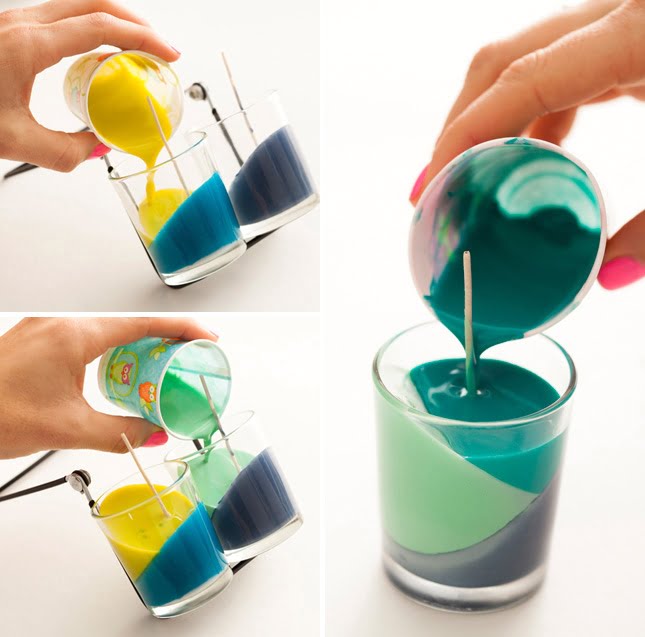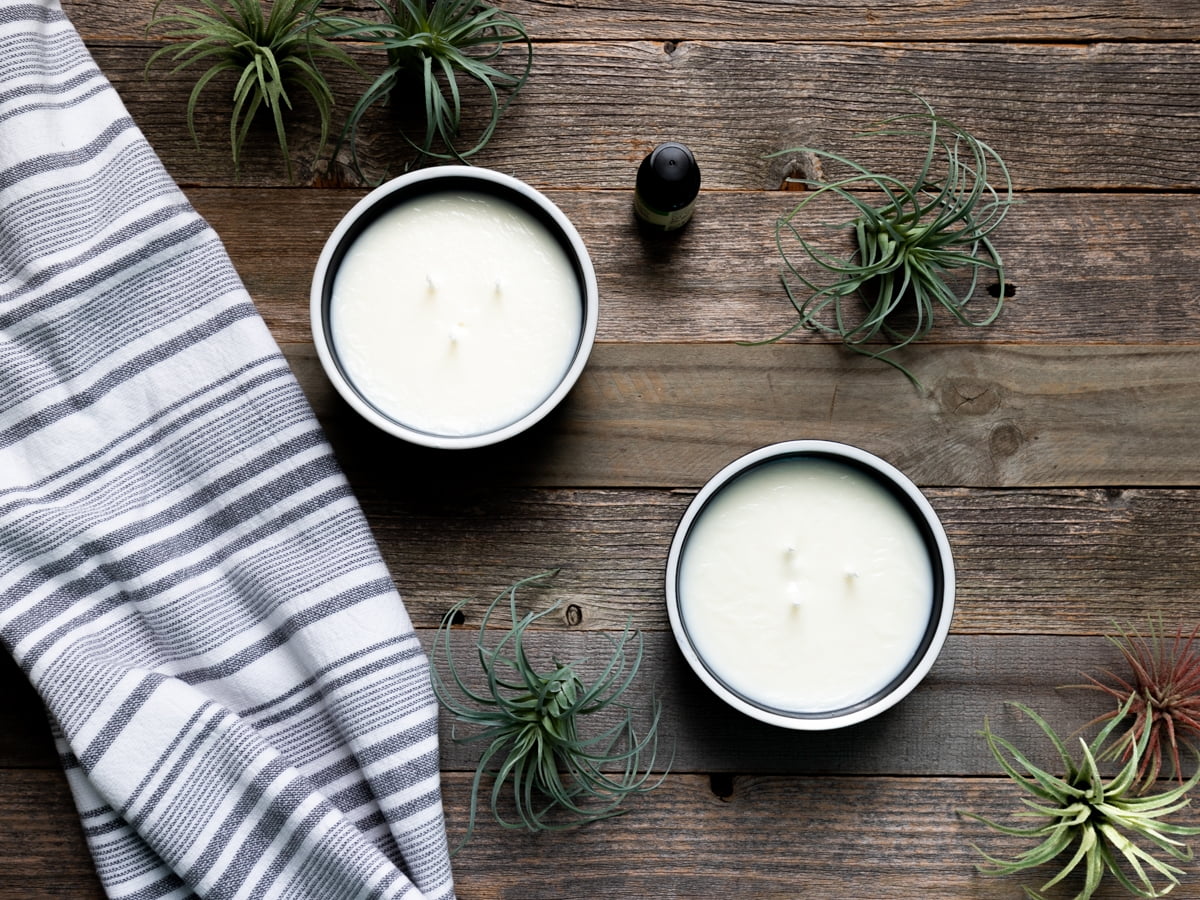Are you wondering how to keep wick straight when making candles? Keeping the wick straight is a crucial step in creating beautifully crafted and functional candles. Whether you are a beginner or experienced candle maker, the positioning of the wick can greatly affect the quality and performance of your finished product. In this article, we will explore the importance of keeping the wick straight and provide you with essential tips and techniques to achieve perfectly centered wicks for your candles.
Choosing the right wick for your candle is essential in ensuring it stays straight during the pouring and cooling process. There are various types and sizes of wicks available, each suited for different candle types and sizes. We will discuss how to select the appropriate wick for your specific candle-making project, taking into consideration factors such as wax type, fragrance load, and container size.
In addition to choosing the right wick, preparing the container is also crucial in keeping the wick straight. We will delve into the proper methods of priming and securing the wick in the container before pouring the wax. From using centering devices to strategic wax pouring techniques, we will provide you with step-by-step instructions on how to keep the wick straight throughout the entire candle-making process.
Choosing the Right Wick for Your Candle
Consider Candle Diameter and Wax Type
When choosing a wick, consider the diameter of your candle. A larger diameter will require a larger, thicker wick to provide enough heat to melt all of the wax and create an even burn. On the other hand, a smaller diameter will need a thinner wick to avoid over-burning. Additionally, different types of wax (paraffin, soy, beeswax) may require different wicks due to variations in melting points and densities.
Consult Wick Size Charts
There are various charts available that can guide you in selecting the appropriate wick size based on the diameter of your candle and the type of wax being used. These charts take into account factors such as fragrance oils, dyes, and additives that can affect how the candle burns.
Test Different Wicks
If you’re unsure about which wick to use, it’s important to conduct some testing before making a large batch of candles. You can experiment with different wicks in small sample candles to see which one burns best for your particular combination of wax type and additives. This trial-and-error process will help you find the perfect wick for achieving an even burn and keeping it straight.
By taking these factors into consideration when choosing a wick for your candle, you can ensure that your candle burns evenly and maintains a straight wick throughout its life. Understanding how different elements such as candle diameter and wax type affect wick selection is key in creating beautiful, high-quality candles with perfectly straight flames.
Preparing the Container for the Wick
When making candles, it is crucial to prepare the container properly to ensure that the wick remains straight throughout the process of pouring and cooling. Here are some steps to follow to effectively prepare the container for the wick:
- Clean the Container: Before placing the wick in the container, make sure it is clean and free from any dust or debris. Use a mild detergent and water to wash the container and allow it to dry completely before continuing.
- Secure the Wick: Once the container is clean and dry, you can secure the wick in place. One way to do this is by using a hot glue gun to attach the metal tab at the bottom of the wick to the center of the container’s base.
- Use Wick Stickers or Adhesive: Another method for keeping the wick straight is by using wick stickers or adhesive tabs specifically designed for candle making. These can be attached to the metal tab at the base of the wick and then firmly pressed onto the bottom of your container.
By following these steps, you can ensure that your wick remains straight and centered as you pour in your wax. This is essential for creating a beautiful, evenly-burning candle.
Remember that preparing your container for the wick sets a solid foundation for creating high-quality candles. Taking care in this step will make it easier to keep your wicks straight throughout their entire use, ensuring that you can enjoy perfectly burning candles every time.
Using Centering Devices to Keep the Wick in Place
When making candles, one of the most important steps to ensure a quality finished product is keeping the wick straight. Using centering devices can greatly assist in this process. Centering devices come in various forms, such as metal wick bars, wooden sticks, or plastic holders. These tools are essential for maintaining the position of the wick as the wax cools and hardens.
One popular centering device is the metal wick bar. This tool consists of a long piece of metal with two prongs that rest on the edges of the candle container. The wick is threaded through a small hole at one end of the bar, keeping it centered as you pour hot wax into the container. The rigidity of metal also ensures that the wick remains straight as it supports the weight of the wax.
Another common centering device is a wooden stick or skewer. These can be easily placed across the opening of the container and secured to keep the wick in place while pouring hot wax. The advantage of using wooden sticks is their affordability and accessibility – they are inexpensive and can be found at any craft store or even repurposed from household items.
If using a plastic holder, it’s important to choose one specifically designed for candle-making to withstand heat without melting or warping. Once inserted into the container, these holders grip onto the wick and maintain its central position while providing stability during pouring and cooling.
Ultimately, using centering devices is an effective way to keep your wick straight when making candles, ensuring that your finished products burn evenly and beautifully.
| Centering Device | Advantages |
|---|---|
| Metal Wick Bar | Rigidity for supporting wax weight |
| Wooden Stick/Skewer | Affordability and accessibility |
| Plastic Holder | Heat-resistant design for stability |
Pouring the Wax Carefully and Strategically
When making candles, pouring the wax carefully and strategically is crucial to keeping the wick straight. Here are some steps to follow to ensure that your wick remains in the center of your candle:
- Use a heat-resistant pouring pitcher: Choose a pouring pitcher specifically designed for candle making, as it will have a handle and spout for easy and accurate pouring. This will help you control the flow of wax as you pour it into the container, reducing the risk of accidentally moving the wick out of place.
- Pour slowly and steadily: Pouring the wax too quickly can cause turbulence in the container, which may displace the wick. Instead, pour the wax slowly and steadily, allowing it to flow gently into the container without disturbing the wick. This will help maintain its position at the center of the candle.
- Fill the container in stages: If you’re making large candles or using multiple containers, consider filling them in stages. Pouring a small amount of wax into each container and allowing it to partially set before adding more wax can help support the wick and keep it straight as you continue to fill up the container.
By following these steps when pouring the wax for your candles, you can ensure that your wick remains straight and centered throughout the process. This attention to detail will result in beautifully crafted candles that burn evenly and elegantly.
Adjusting the Wick as the Candle Cools
After pouring the wax into the container and centering the wick, it is crucial to continue monitoring the wick as the candle begins to cool. This step ensures that your candle will have a straight and even burn when it is lit. Here are some important sub-sections to consider when adjusting the wick as the candle cools.
Check for Off-Centering
As the wax starts to solidify, check to see if the wick has moved off-center. It is not uncommon for the wick to shift slightly during this stage. Use your centering device or other tools to gently nudge the base of the wick back into place if you notice any movement. Keeping a close eye on this will result in a perfectly straight wick once the candle is fully set.
Tension Adjustment
It’s also essential to keep an eye on the tension of the wick as the wax cools. Sometimes, as the wax solidifies, it can create additional tension on one side of the wick, causing it to lean off-center. If you notice this happening, delicately adjust the tension by gently pulling or nudging the wick back into alignment before it fully sets.
Final Trim
Once your candle has completely cooled and set, give the wick one final trim. This step helps ensure that your candle will light evenly and prevent any unnecessary smoking or sooting. Trim the wick to about 1/4 inch before lighting it for a clean and efficient burn.
By carefully following these steps and regularly monitoring your candles during their cooling process, you can achieve a perfectly straight and beautifully burning candle every time – no matter how challenging it can be sometimes figuring out how to keep wicks straight when making candles.
Troubleshooting Tips for Keeping the Wick Straight
Having trouble keeping the wick straight when making candles can be frustrating, but there are several tips and tricks you can use to ensure your wick stays perfectly centered. One common issue people face is that the wick moves when pouring the wax, resulting in a crooked or lopsided candle. However, with the right techniques, you can easily troubleshoot this problem and create beautifully straight candles every time.
One effective way to prevent the wick from moving around when pouring wax is to use a centering device. These simple tools come in various shapes and sizes, but they all serve the same purpose: keeping the wick in place while you pour the wax. Whether you opt for a metal wick holder or a plastic centering tool, using one of these devices can make a significant difference in ensuring your wick remains straight throughout the candle-making process.
Another troubleshooting tip for keeping the wick straight is to pour the wax carefully and strategically. Pouring too quickly or forcefully can cause the wick to shift or tilt within the container. Instead, try pouring the wax slowly and steadily, allowing it to surround the wick evenly without causing any disruption. By taking your time during this step, you can greatly reduce the chances of the wick becoming misaligned as the candle sets.
| Troubleshooting Tip | Benefit |
|---|---|
| Use centering devices | Keep wick in place while pouring wax |
| Pour wax carefully | Prevent wick from shifting or tilting |
Conclusion
In conclusion, achieving a perfectly straight wick when making candles is not only important for aesthetic purposes but also for the optimal burning of your candle. By following the steps outlined in this article, you can ensure that your wick remains straight throughout the candle-making process.
Choosing the right wick for your candle is crucial as it will ultimately determine how well the wick stands up during the pouring and cooling process. Preparing the container and using centering devices are key steps in maintaining the straightness of the wick. Additionally, pouring the wax carefully and making necessary adjustments as the candle cools will contribute to a beautifully straight final product.
Remember that troubleshooting may be necessary at times to address any issues that arise with keeping the wick straight. Whether it’s using a different centering device or making slight adjustments during cooling, don’t be discouraged if you encounter challenges along the way.
With practice and patience, you’ll soon be enjoying perfectly straight wicks and beautiful candles. By taking these measures, you’ll be able to proudly showcase your handmade candles and enjoy them lit in your living space.
Frequently Asked Questions
How Do You Keep a Wick Centered When Making Candles?
Keeping a wick centered when making candles can be achieved by using a wick centering device or tool, which holds the wick in place at the center of the mold while the wax is poured.
Another method is to gently press the wick into the softened wax at the bottom of the container and ensure it stays in place as the wax hardens.
How Do You Straighten a Candle Wick?
To straighten a candle wick, you can carefully use a pair of tweezers to gently pull and straighten the wick while the wax is still soft. It’s important to do this very delicately to avoid damaging or snapping the wick.
How Do You Keep a Candle Wick From Curling?
In order to keep a candle wick from curling, it’s helpful to trim the wick to an appropriate length before lighting it for the first time. Additionally, ensuring that there is proper ventilation around the candle can also prevent the wick from curling due to uneven air flow.

Welcome to my candle making blog! In this blog, I will be sharing my tips and tricks for making candles. I will also be sharing some of my favorite recipes.





